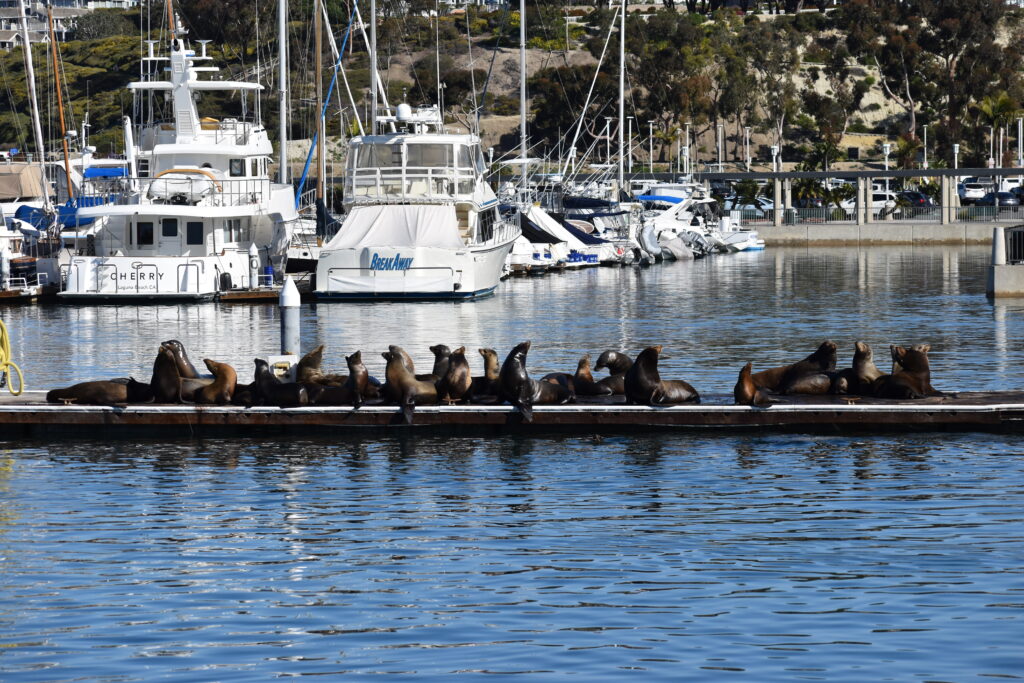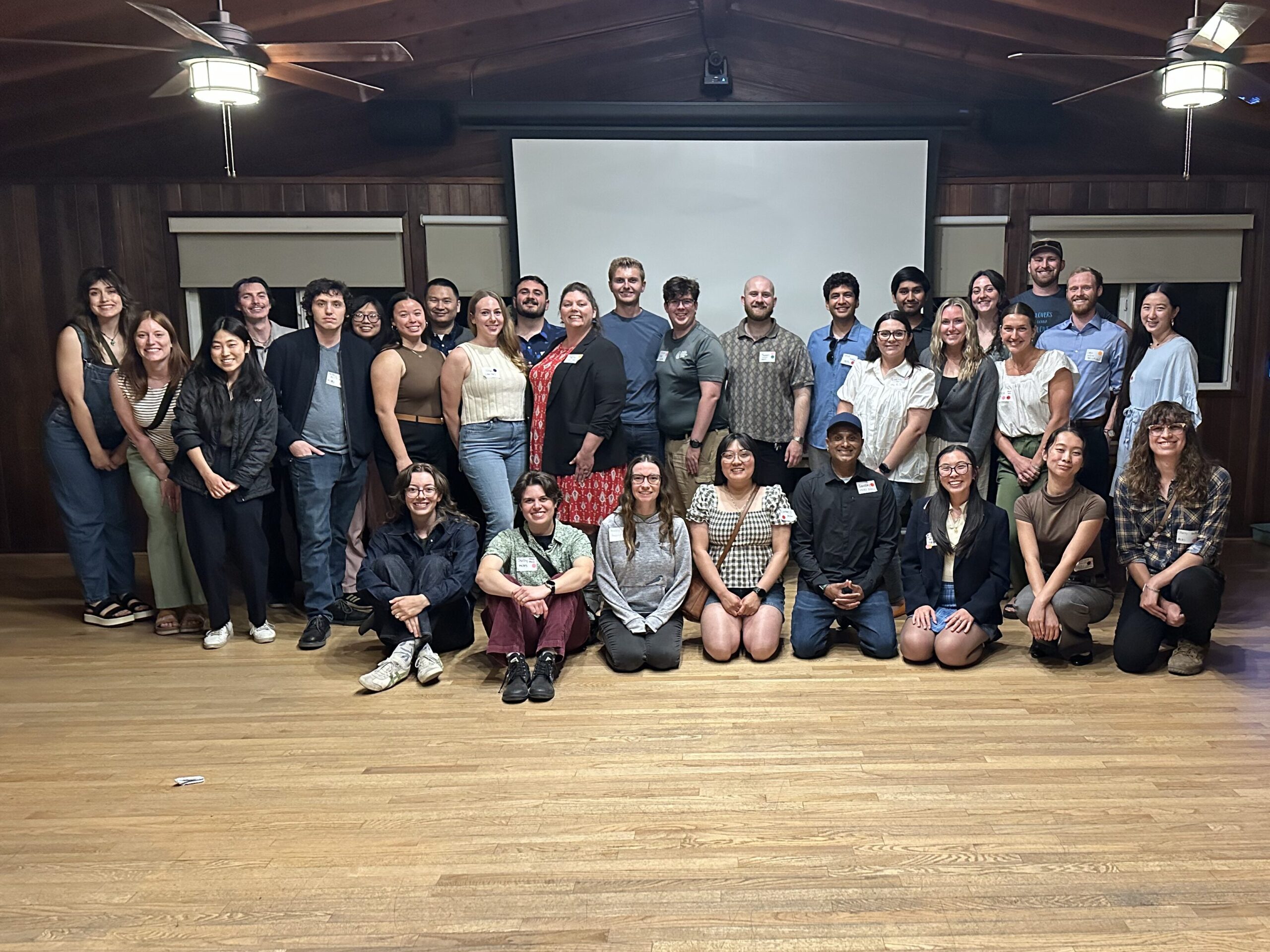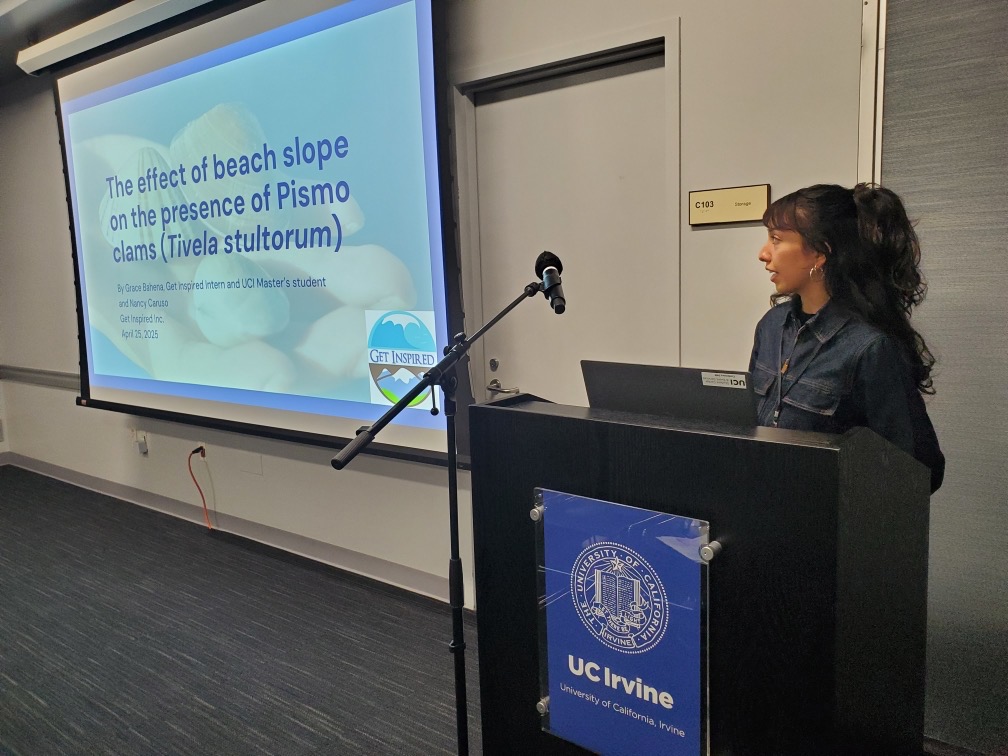Student Blog: Sea Lions of Dana Point Harbor by Houstan Vassel

A group of California sea lions hauled-out at Dana Point Harbor Photo Credit: Houstan Vassel
All About the California Sea Lion
Ranging from southeast Alaska to the Pacific coast of central Mexico, California sea lions are one of six sea lion species in the world. They inhabit a variety of substrates, including cobblestone, sandy beaches, rock platforms, and mudflats (PMMC). Once described on the IUCN Red List as “very rare and believed to be decreasing in number,” this species has recovered from historical exploitation and is now a species of least concern.
California sea lions are sexually dimorphic, with males being longer and weighing three to four times more than females. Females and juveniles are a tawny brown color, while adult males are typically dark brown. Mature males can be further distinguished from juveniles and females by the bumps on their foreheads known as sagittal crests.
From May to August, sea lions will gather in large groups onshore to mate and give birth. Female sea lions undergo a 12-month reproductive cycle and will generally give birth in the first week of June (PMMC). The Channel Islands serve as the main rookery for California sea lions, with San Miguel Island alone having over 70,000 sea lions breed and pup each year (NPS). Outside of the breeding season, sea lions gather at haul-out sites, one of which is Dana Point Harbor in Orange County (see above picture).
The Danger of Entanglement
One of the biggest threats facing California sea lions is drift gillnet entanglement. A drift gillnet is a wall of netting made of monofilament or nylon suspended in the water column to catch fish. Unfortunately, due to the mesh size, this netting often gets wrapped around marine animals, resulting in injury and death. Due to their indiscriminate damage to the marine ecosystem, California banned driftnets in 1990 by passing the Marine Protection Zone and Gill and Trammel Net Prohibition Initiative. However, gillnets remain legal in the Exclusive Economic Zone, which is federal territory.
Addressing the Problem

A tagged female sea lion hauled-out at Dana Point Harbor. Photo credit: Houstan Vassel
One way the entanglement problem is addressed is by rescuing entangled sea lions. The National Oceanic and Atmospheric Administration (NOAA) West Coast Marine Mammal Stranding Network was created in the 1980s under the Marine Mammal Protection Act (NOAA) with the purpose of responding to distressed marine mammals. The Network consists of scientific institutions and volunteer networks throughout California, Washington, and Oregon. The Pacific Marine Mammal Center (PMMC) is a local partner in this network, and one of its jobs is to rescue and rehabilitate entangled and otherwise injured marine mammals. Before releasing rehabilitated animals, PMMC fits them with an orange plastic tag in accordance with NOAA’s orange tag program. California sea lions are tagged on the front flipper, with males tagged on the left and females tagged on the right. These tags help partners of the stranding network identify individual animals and monitor their health as they relearn how to survive on their own.
Another way to help sea lions is through policy change. A hopeful development occurred on December 29, 2022, when President Biden signed into law the Driftnet Modernization and Bycatch Reduction Act (Oceana), initiating the phasing out of large-mesh (greater than 14 inches) drift gillnets in the swordfish industry. This law will also promote the adoption of alternative fishing methods that minimize bycatch. The phasing-out period will last five years, meaning there is still ample time for damage to be done, but this law is a great first step toward protecting our marine ecosystems.
References
Blacow, Ashley. “President Biden Signs Legislation to Prohibit Destructive Swordfish Drift Gillnets in All U.S. Waters.” Oceana USA, 7 Feb. 2023,
https://usa.oceana.org/press-releases/president-biden-signs-legislation-to-prohibit-destructive-s wordfish-drift-gillnets-in-all-u-s-waters/.
“California Sea Lions.” Pacific Marine Mammal Center, https://www.pacificmmc.org/california-sea-lions.
Fisheries, NOAA. “West Coast Marine Mammal Stranding Network.” NOAA, 7 Mar. 2023, https://www.fisheries.noaa.gov/west-coast/marine-mammal-protection/west-coast-marine-mam mal-stranding-network#more-information.
Fisheries, NOAA. “West Coast Orange Tag Program.” NOAA, 15 Aug. 2022, https://www.fisheries.noaa.gov/west-coast/marine-mammal-protection/west-coast-orange-tag-pr ogram#:~:text=Contact%20Us-,About%20the%20Orange%20Tag%20Program,released%20bac k%20to%20the%20wild.
“Seal and Sea Lion Viewing.” National Parks Service, U.S. Department of the Interior, https://www.nps.gov/chis/planyourvisit/seal-and-sea-lion-viewing.htm.




